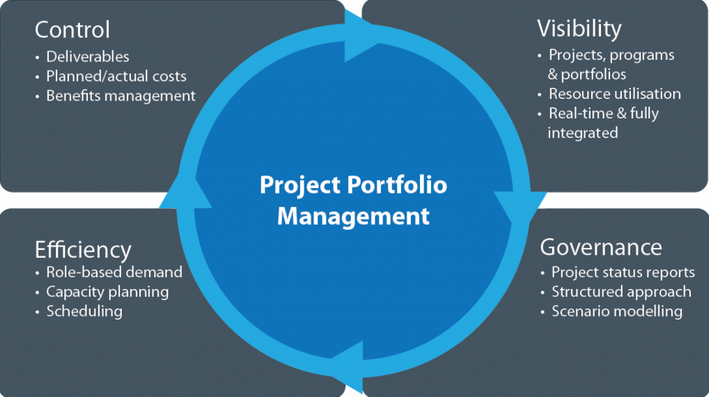 Too many companies miss out on obvious opportunities, don’t be one of these companies – you need tools to manage your business processes. You need tools to keep your teams on schedule. You need tools to track budget and staffing. You need tools that give you deep-dive analytics into your projects and how they mesh with company goals. Get all this and more in one complete solution: project portfolio management.
Too many companies miss out on obvious opportunities, don’t be one of these companies – you need tools to manage your business processes. You need tools to keep your teams on schedule. You need tools to track budget and staffing. You need tools that give you deep-dive analytics into your projects and how they mesh with company goals. Get all this and more in one complete solution: project portfolio management.
Project portfolio management is the key to helping to deliver success for your team, your company, and yourself. This might sound too good to be true, but we want you to read on to learn how this management solution can make your job easier and make it easier for those you work with to succeed.
Quick, answer the following questions:
- What is your company’s competitive advantage?
- Why are you working on your current project?
- Is your project on track?
- What is the risk versus reward of your recent decisions?
- How many resources (people and money) do you have to devote to the project?
- Does everyone involved in the project know why they’re doing what they’re doing?
- How many active projects do you have? How many more projects do you have in your product pipeline?
- Can you rank the priority of your different projects?
Yikes, these are some intense questions. These questions can be more easily answered when you know the who, what, when, where, why and how of your projects, team members, company, and clients. This is what project portfolio management gives you. It unlocks the answers to these questions and shows you the hidden and potentially missed opportunities that can keep you on a path towards success.
Opportunity in Change
Let’s face it, the business world is changing so quickly. With evolving modes of communication, working, managing, and the potential new technologies offer – it can be almost downright impossible to stay up-to-date. But it is this change that you can harness and use to your benefit when you’re looking at it through the lens of project portfolio management.
So often companies become overwhelmed by change and switch to survival mode, simply trying to keep pace with their competitors. You don’t need to be like these other companies. Instead we want you to use project portfolio management to:
- Manage your product portfolio through-out your company, involving all teams such as engineering, research and development, marketing, sales, and finance. Keep everyone involved and able to communicate their thoughts on how a project is working and not.
- Take advantage of the best resource available to you. This means identifying key people who can help lead teams, communicate well, and be involved in decision-making. It also means looking at your budget and financial resources, knowing how much money you can allocate to the project and how best to do so.
- See where the holes are in your strategy. So often these holes point to the risk factors of a project. Know where you might falter and develop a plan for when your project is tilting more towards risk than success.
- Evaluate and utilize new management project methodology such as agile to your company’s benefit. See how you can use this agile to get the most out of a project.
- Keep on top of change. This change includes industry change, knowing when and how this can impact your project portfolio. This change includes new demands on your human and financial resources. This change includes new requests from clients to add a new feature or address a product issue. This change includes other projects in your stream and how these are impacting your current focus.
Smart Solutions for Success
Yes, good portfolio project management practices can show your hidden opportunities, manage change, and set you up for individual and company-wide success. When you can clearly see how your teams are working together, what the risk factors are, and how you can achieve your deliverables – you’re able to manage and deliver a successful project.
You can’t do this without the full picture. The people. The tools. The budget. The vacation time. The client needs. The other projects. The financial implications. The overall company goals. Each and every project must take these factors (and more) into consideration. When you can easily answer the questions we asked earlier, you know you’ve got project portfolio management working for you.







